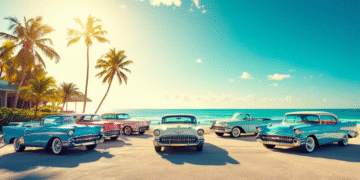Aiming at decking up your Toyota Tacoma for your next big adventure?
Getting the right roof rack can make a huge difference. No matter what it is that you need to carry, your Tacoma requires a rack that is hardcore, versatile, and built for your situation.
But with all these options available, how do you find the one that fits your needs?
You need to consider some aspects to find the best Tacoma roof rack for you, whether you need it for off-road adventures, long road trips, or regular daily utility. Let’s break it all down so you can load up and drive off knowing your gear is safe and secure for the trip.
1. Define Your Primary Use
Maximizing the utility of your Tacoma can be accomplished with the addition of a roof rack, but you first need to determine how you will utilize it.
Ask yourself what kind of equipment you will be transporting most frequently. Are you an outdoor lover who regularly transports items like kayaks, skis, or bikes?
Then you will need a rack that can accommodate those particular items.
Maybe you are an overlanding or camping enthusiast who requires a platform-style rack to carry a rooftop tent along with additional items such as fuel cans or recovery boards. For lighter purposes, such as accommodating luggage or storage bins, a more aerodynamic, lower-profile rack might do the trick.
Identifying the primary activities helps to prevent unwanted expenses, or even paying for a rack that does not align with your lifestyle. Take note that your Tacoma should serve as a vehicle representing your way of living, so picking a roof rack that helps facilitate that lifestyle is ideal.
Knowing your needs first will help you find the best Tacoma roof rack that is both functional and worth the cost.
2. Consider Weight Capacity
Always remember that the roof rack for your Tacoma must be selected with its weight capacity in mind—dynamic (while in motion) and static (while parked), both simultaneously.
The rack must always align with your intended cargo. When carrying offloaded equipment, the dynamic capacity becomes more critical. If a rooftop tent is needed, the rack must support both the tent and the person with equipment inside.
Driving with off-road tools or construction materials could shift this balance dangerously. Also, be mindful of the type of driving—reckless shifts can endanger the vehicle’s handling, fuel efficiency, and safety.
Always consider the weight of the equipment, as it would change the fuel efficiency and balance if exceeded. Review your Tacoma’s roof load ratings to ensure you stay within reasonable limits for daily functions while allowing the freedom of an adventure.
3. Ease of Installation and Removal
Consider the ease of installation or removal when picking a roof rack for your Tacoma. Some roof racks are more permanent than others, requiring drilling into the roof or gutter mounts.
However, others are simpler, using bolt-on and clamp-on systems, making the installation far less burdensome. For those who switch between different rack setups seasonally or based on the type of trip, an easy-remove system is much more convenient.
Also, a user-friendly design allows for the lack of professional aid, which in turn decreases the overall cost. Look for mounting kits that come with straightforward steps and limited tools.
The strongest and most versatile roof rack isn’t adequate unless it is adapted and tailored to one’s lifestyle, improving convenience and ease of access.
4. Choose the Right Material & Build
The material used in the roof rack determines whether or not it can adequately meet your requirements. If you need something lightweight that doesn’t rust, aluminum is the best option. It works well for day-to-day activities and won’t add excess weight to your Tacoma.
For those who intend to tackle rougher terrain or transport heavier items, steel does offer additional strength and durability, though it can add more weight and rust if not adequately coated.
Alongside these features, check the aesthetics too. Powerful and lightweight racks will generate less noise, leading to better gas mileage during longer trips. A good combination of strength, weight, and weather resistance is needed in the rack for it to last through all your adventures.
5. Look for Modularity and Accessories
Modularity is key if you plan on making the most out of your roof rack and have a wide array of additional accessories. Modular racks offer the best value since they allow complete customization for every trip.
You can start with a basic platform and add crossbars, side rails, or mounting brackets as your needs fluctuate.
Camping?
Grab a rack that supports rooftop tents as well as awning brackets.
Into watersports or biking?
Ensure kayak and bike mounts can be attached.
If you’re going off-roading, you’ll want options for light bars, recovery boards, or off-road storage cases, too. A modular system allows adaptability with ever-changing gear without the need to purchase an entirely new rack system.
These should be the primary factors to consider when choosing a rack if you want it to be interchangeable for any and all adventures.
Conclusion
Choosing a good roof rack for your Tacoma is less about practicality and more about boosting your whole way of living. No matter whether you’re after off-road thrills, quick escapes, or everyday uses, having the right rack means it fits your gear, goals, and lifestyle.
You need to look at weight limits, how simple the rack is to handle, how durable the material is, and if it adapts to new activities. Don’t go for a rack that’s designed to suit everyone.
Invest in a roof rack that matches your activities and makes each trip simpler, safer, and better. Once your setup is just right, your Tacoma changes from a vehicle to your perfect adventure mate.













